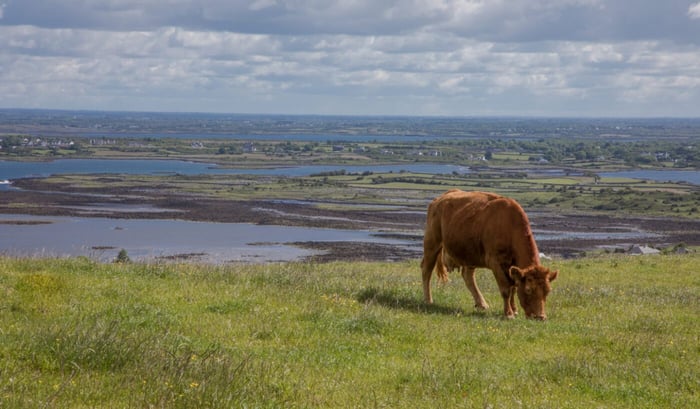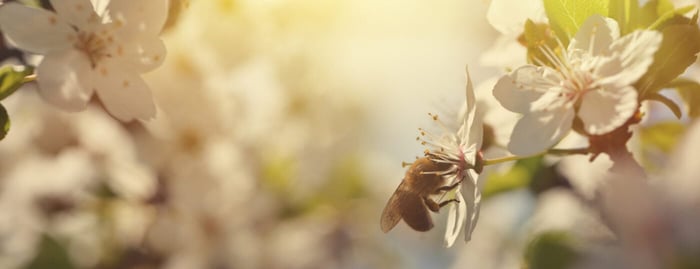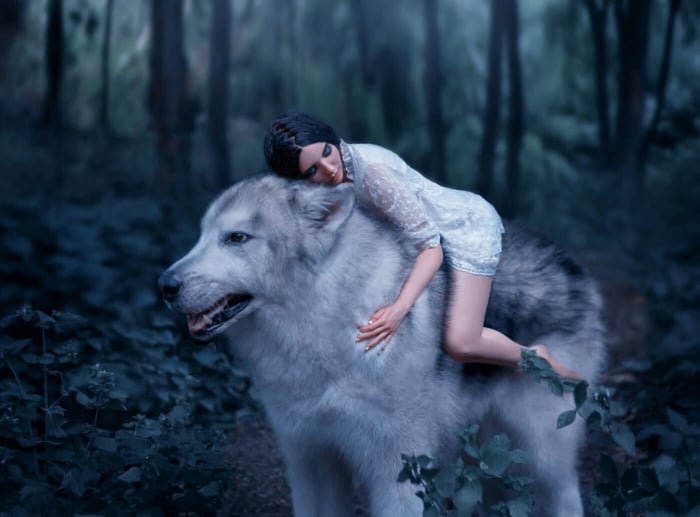Nestled within the rolling hills of the British countryside, back before magick became myth, the small community of Shropshire experienced what could only be referred to as a miracle. This is where the tale of the Dun Cow begins.
That year, there was a terrible drought. The fields, normally green and lush, were yellowed and wilted. Crops were failing, livestock was dwindling, and families were starving. Every day, the villagers prayed for a miracle, one that would rid them of this horrible curse.
Whether the people of Shropshire were cursed or just unlucky is still up for debate. But either way, just when all hope seemed lost, their prayers were answered.
When fate intervened, it wasn’t in the form of an angel or divine message, but a cow. The Dun Cow, to be exact.
Some say that the cow was a gift from a friendly faerie. Allegedly, the faerie was passing through the countryside when she discovered that the plants and people of Shropshire were withering away. Faeries are tricksters, but they are also empathetic. To alleviate the townsfolk’s sorrow and preserve the once-fruitful terrain, the faerie left an enchanted cow atop the highest hill in Shropshire.
In other retellings, it wasn’t a faerie but a shepherd who is credited with discovering the Dun Cow. As the shepherd was herding his sheep across Stapeley Hill, the morning mist shifted and took on the shape of a beautiful woman. The woman explained that she had heard the villagers’ prayers and was here to deliver a cow, one that would feed the hungry, fertilize the land, and be a companion for the lonely.
She said that the people of Shropshire could keep the cow forever, so long as they followed one rule: If the cow was to keep producing milk for all eternity, each family could only fill their milk pail once per day. If the cow sensed greed or saw that anyone was taking advantage of her precious gift, she would run away and never return.
The shepherd wasn’t sure if this woman was a witch, an angel, or a goddess, but he was too delirious with hunger to care. He ran down the hill and shared the news with the others. One by one, the families lined up, pails in hand, to milk the Dun Cow.
The Dun Cow was a mighty sight. Big as a house and pure white, the magickal heifer took care of the villagers as the woman from the mist said she would. As the people regained their strength, the earth also began to heal. The village was once again filled with conversation, and the cries for hunger were replaced with laughter.
While the entire town seemed to be rejoicing, there was one person who detested the town’s new savior.
A swindler, masquerading as a witch, found the Dun Cow to be quite an inconvenience.
You see, before the cow arrived, the swindler had the entire village convinced that she was the only one strong enough to repel the curse. The humble townsfolk paid the swindler in cheese, bread, and whatever meager offerings they could spare. While the villagers were little more than skin and bones, the swindler grew fat. Eventually, her greed took on a life of its own.
So when the Dun Cow arrived and the villagers stopped worshipping the swindler, the false-witch was resentful.
How dare the Dun Cow swindle a swindler!
Eager for payback, the false-witch waited until all the people had received their milk for the day. She climbed to the top of the hill where the cow was grazing and noticed that a storm was moving swiftly towards Shropshire. She reveled in her good fortune as the dark clouds cast an ominous shadow upon the cow.
The swindler rested her pail on the ground and started milking. She milked and milked, but her pail never overflowed. The Dun Cow became impatient, for she knew that she had given more than enough milk to fill even the deepest of pails.
The swindler sensed the animal’s suspicion, but she assumed that it was too dark for the cow to see the truth. To soothe the heifer and keep the milk flowing, the swindler told the cow to look inside of the half-filled pail.
But just as the cow peered into the bucket, a flash of lightning lit up the sky. To the Dun Cow’s dismay, she realized that the swindler had poked several holes in the bottom of the pail. The cow bellowed in anger and kicked at the woman. She knocked over the pail and stomped her feet in the precious milk that pooled around her hooves. Her hide, once as bright and creamy as the milk she gave, was now dull and brown.
The cow took off running, leaving Shropshire behind. When the Dun Cow reached her old home and told the lady of mist what the false-witch had done, the goddess cursed the swindler and turned her to stone.
Today, the stone is called Mitchell’s Fold, although nobody knows if it’s named after the shepherd, the swindler, or the cow.
Because the villagers of Shropshire had learned from the famine that nearly took their lives, they had been preserving the extra milk as cheese. Thanks to their quick thinking, they had more than enough food to feed their families. And by virtue of the Dun Cow, the fields of Shropshire were once again sprouting green—a welcome sight after a season of struggle.
Sunstone (2-4 Pieces)
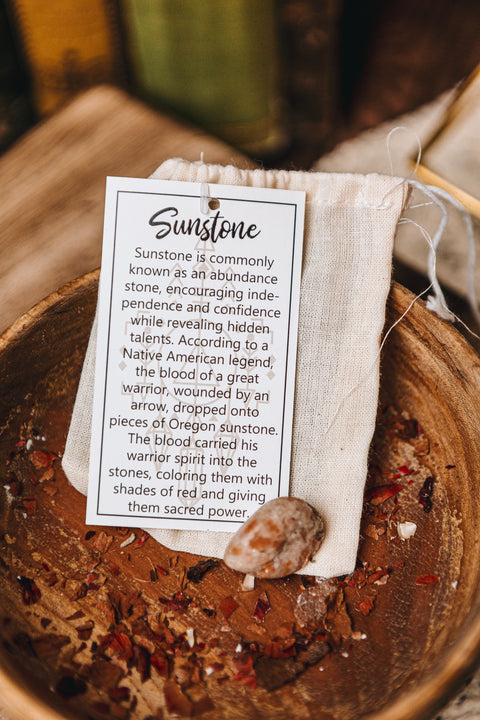
$ 12.00
Healing Properties Throughout history sunstone has been used for boosting ones metabolism while stimulating self-healing powers. Sunstone is said to regulate and harmonize all of the organs and is often used to treat chronic sore throats, ulcers and stomach pains.… read more
Wild & Weedy Apothecary by Doreen Shababy
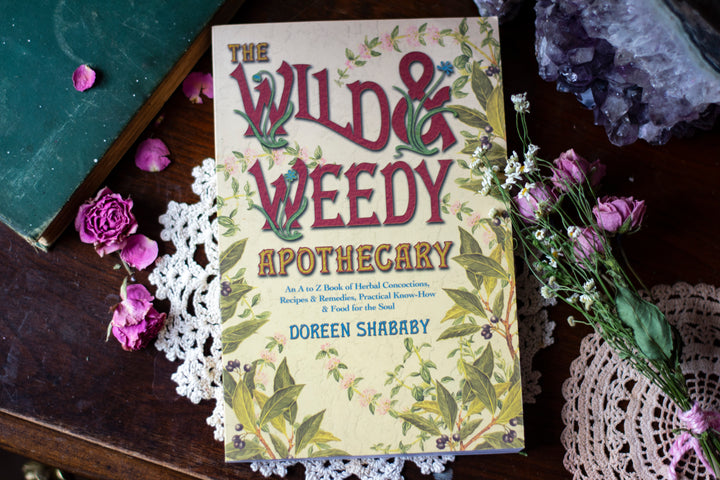
$ 19.99
"Those who dare delve into this book may emerge with catnip on their breath, mud on their knees, wild fruit juices on their hands, and a mysterious, satisfied smile―the very image of a wild and weedy woman. Come on!" ―Susun S.… read more


